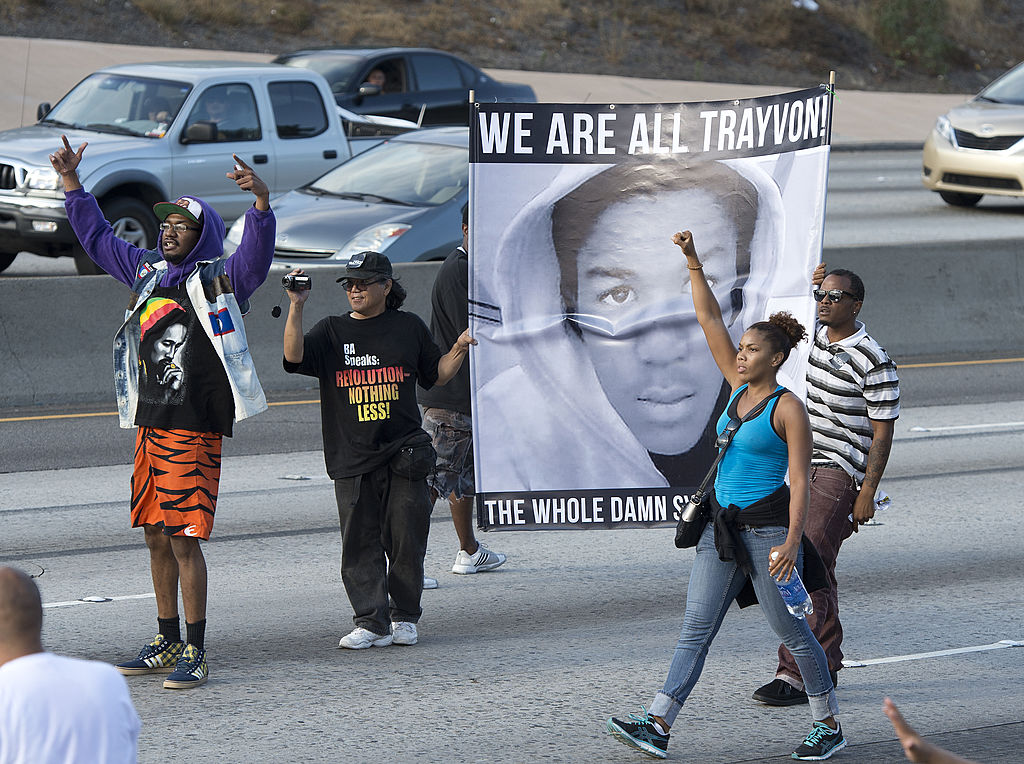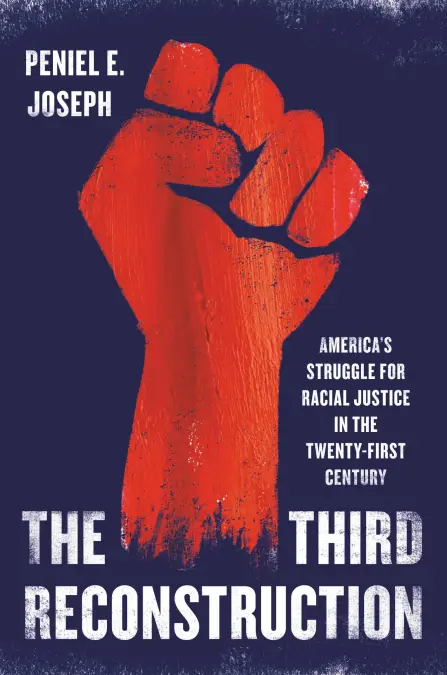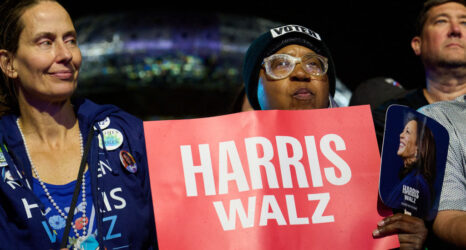
At a July 2013 White House press conference, President Barack Obama addressed the Black community’s anguish over the shocking shooting death of 17-year-old Trayvon Martin. The United States’ first Black president’s poignant statement underscored how the Black community views “this issue through a set of experiences and a history that doesn’t go away.” This indelible set of experiences and history are at the heart of historian Peniel E. Joseph’s latest work, The Third Reconstruction: America’s Struggle for Racial Justice in the Twenty-First Century.
Joseph’s work serves both as a memoir and a historical analysis. It combines stories from his personal life as a child of Haitian immigrants with an exploration of the U.S.’s racial past that not only spotlights the historical contributions of Black women and queer Black people, but also sheds light on the present to bring hope for the future.
Joseph’s profound examination of the U.S.’s racial past and present is punctuated by a detail-rich discussion of how Black women and the queer Black community have guided movements for social justice and equality throughout American history.
Most of the primary historical actors in Joseph’s retelling of Black history are Black women and queer Black people. His analysis brings to the forefront individuals such as the path-breaking journalist Ida B. Wells, the abolitionist and steadfast suffragist Frances Ellen Watkins Harper, Black feminist Audre Lorde, voting rights activist Fannie Lou Hamer, civil rights activist Ella Baker and scholar-activist Angela Davis.

As Joseph’s account demonstrates, Black women and the queer Black community have designed far-reaching intersectional visions of equity that have fundamentally shaped the country’s three periods of reconstruction.
Joseph’s central argument is that the U.S. is facing a pivotal point in its history because it is emerging from a Third Reconstruction. The third national project of reconstruction began with the optimism that surrounded the election of President Obama. The terror that engulfed the Jan. 6 Capitol insurrection initiated its end.
Following in the intellectual footsteps of historian W.E.B. Du Bois, Joseph describes the U.S.’s periods of reconstruction as potential new origin stories for the country; moments of opportunity for the country to remake itself anew into a more just and equitable society. In the wake of the Third Reconstruction, Joseph concludes, the country faces a choice: Commit to the hard work of confronting and atoning for the racial horrors embedded in the U.S.’s past and present, or return to a mythology of the country’s history that has excused white violence and terrorism to reinforce white supremacy.
A core component of Joseph’s analysis is the contention that the U.S.’s recent past must be placed within a larger historical context.
The First Reconstruction, Joseph explains, began in the aftermath of the Civil War with the passage of the 13th Amendment in 1865. It ended with the increase in white Americans’ terrorism of Black citizens, culminating in the Wilmington Coup of 1898, and the rise of the Jim Crow era of Black disenfranchisement and subjugation.
The country faces a choice: Commit to the hard work of confronting and atoning for the racial horrors embedded in the U.S.’s past and present, or return to a mythology of the country’s history that has excused white violence and terrorism to reinforce white supremacy.
Joseph identifies the post-World War II civil rights era as the Second Reconstruction. As Joseph describes it, the Supreme Court’s decision in Brown v. Board of Education in 1954 ignited the second period of racial reckoning; the assassination of Dr. Martin Luther King Jr. in 1968 signaled its end.
While the First Reconstruction dismantled the U.S.’s system of chattel slavery and the Second Reconstruction unseated legal racial segregation, the Third Reconstruction has focused on securing the full promise of multiracial democracy through the eradication of mass incarceration and police brutality in favor of restorative justice and community wellness for Black Americans.
All three periods of national reconstruction have faced a similar pattern in which a bright push for renewal is eventually challenged by a furious resistance. Joseph contends that this cycle between hope and tragedy is rooted in two dueling conceptions of American citizenship: reconstructionism and redemptionism.
- Reconstructionists, Joseph explains, are dedicated to securing multiracial democracy through social justice and full citizenship for all Americans regardless of race.
- Redemptionists, on the other hand, seek to concentrate the status of full citizenship to white Americans alone.
Because redemptionists believe that only white Americans can assume all the rights and responsibilities of citizenship, they seek to ensure the political and economic dominance of white Americans by any means necessary, including virulent vigilantism.
The third national project of reconstruction began with the optimism that surrounded the election of President Obama. The terror that engulfed the Jan. 6 insurrection initiated its end.
Although reconstructionists have had significant victories, the redemptionist habit of mind has remained influential in the formation of the U.S.’s institutions and social practices. Joseph argues that reconstructionists will only succeed in upending the power of redemptionism if they can secure the complete recognition and realization of Black Americans’ rights as citizens and their dignity as humans.
The close relationship between Black citizenship and Black dignity reverberates throughout Joseph’s work. Joseph explains that moderate reconstructionists, such as former President Obama, have primarily focused on securing the affirmation of Black Americans’ full citizenship status. Joseph argues that although Obama offered an important precedent for the hope of multiracial democracy, his preoccupation with “colorblind” universalist public policies limited his ability to fundamentally tackle the deep-seated racial issues entrenched in the U.S.’s system of mass incarceration and police brutality.
In contrast to their more moderate counterparts, radical reconstructionists, embodied by Black Lives Matter (BLM) activists, have realized that the complete affirmation of Black Americans’ dignity as humans is a prerequisite for securing Black Americans’ status as full rights-bearing citizens. A belief in the power of grassroots activism has animated the BLM movement.
As Joseph writes, BLM activists have avoided the cult of personality, top-down style of leadership politics represented by Obama’s approach to reconstructionism. In Joseph’s description, BLM activists are dedicated to releasing the untapped possibilities of multiracial democracy by ensuring that Black Americans’ citizenship is not only affirmed but also valued and respected through institutional guarantees of an equality of opportunities and an equality of outcomes.
It is in Joseph’s discussion of the BLM movement that he pays particular attention to the historically influential roles of Black women and queer Black people. This aspect of Joseph’s analysis builds on the scholarship of historian Barbara Ransby and her insights into how the BLM movement has set aside the patriarchal restrictions that limited the previous two periods of reconstruction. As Joseph explains, radical Black queer and feminist activists Ayo (formerly Opal) Tometi, Patrisse Cullors and Alicia Garza were the creators of the hashtag #BlackLivesMatter. They had coined the term as a response to the tragic shooting-death of Trayvon Martin.
BLM activists have consciously centered the visions of Black women forbearers, like civil rights activist Ella Baker, at the core of their organizational structure to make sure that their movement has had less hierarchy and more inclusiveness. Joseph contends that the intersectional and inclusive approach to reconstructionism that has driven the BLM movement has allowed BLM activists to develop policy agendas that have considered the mutually important roles that race, gender, class and sexuality have played in shaping the identities and lives of Black Americans.
Joseph’s deep examination of the U.S.’s racial history in The Third Reconstruction offers a pathway forward for how the past can inform the present. In recent months, historians have clashed over whether history should be used as a tool for the politics of the present. The uproar unleashed in reaction to an August 2022 piece by historian James H. Sweet, former president of the American Historical Association, encapsulates the factors involved in this intense debate.
But, as Joseph maintains, the dynamics of the present are never truly knowable until we anchor them to the contours of the past. Joseph’s powerful analysis, and his thorough retelling of his own lived experiences, skillfully demonstrate that not only is the personal political, but the past is too.
Up next:





